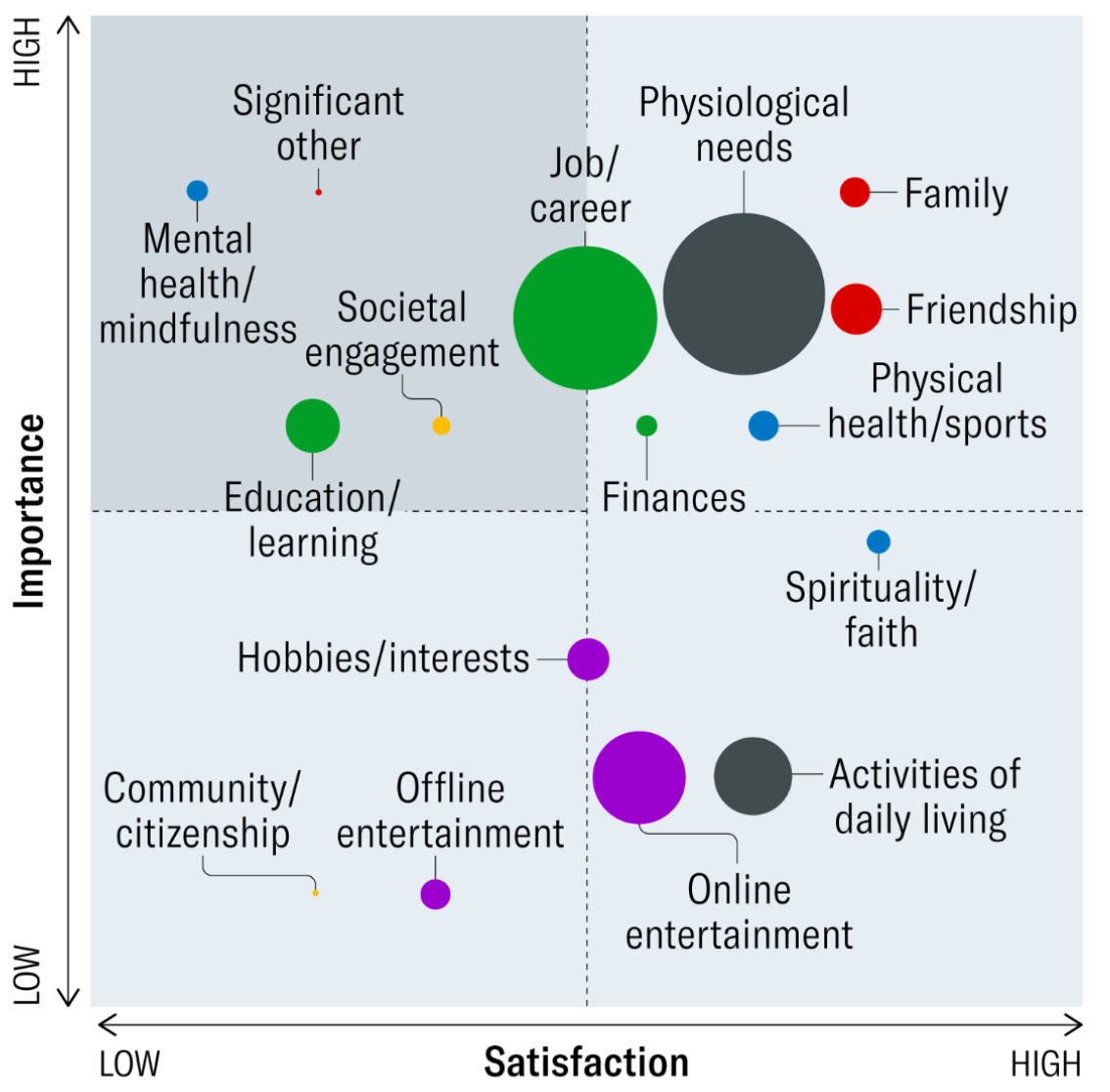Harvard Business Review turned their expertise on “Strategy” toward living a happy life. The result was a very strange article (see source).
There’s a 7-step process for Businesses to take, and those can be adopted to the realm of life:
| Business | Life |
|---|---|
| How does the organization define success? | How do I define a great life? |
| What is our purpose? | What is my life purpose? |
| What is our vision? | What is my life vision? |
| How do we assess our business portfolio? | How do I access my life portfolio? |
| What can we learn from benchmarks? | What can I learn from benchmarks? |
| What portfolio choices can I make? | What portfolio choices can I make? |
| How can we ensure a successful, sustained change? | How can I ensure a successful, sustained life change? |
Step 1 - How Do I Define a Great Life?
Use something like PERMA-V and a scale to determine how satisfied you are with your life. Life areas also feel like a good way to break this down.
Each element in can be rated on a modified 2x2 Growth-Share Matrix to determine their importance & satisfaction.
Step 2 - What’s My Life Purpose?
They suggest asking yourself:
- What am I good at?
- What are my core values?
- What activities “light me up”?
- What need can I help address in the world?
This deals with the Venn Diagram of “good at”, “like to do”, and “what I enjoy”. They phrase enjoyment in terms of values.
Step 3 - What’s My Life Vision?
Ask yourself - “What story would I like people to tell about me in 5 to 10 years?” “What would I do if money weren’t an issue?” “What will 80-year old me not want to have missed in life?”
A vision describes the direction you’re taking in your life. It’s how you know if what you’re doing is taking you where you want to go - you have to decide where you want to go.
Step 4 - How Do I Assess My Life?
HBR suggests using a 2x2 Growth-Share Matrix to plot out their suggested list of HBR’s Key Life Areas in terms of importance and satisfaction.
They suggest figuring out how you spend your Life Energy and your 168 Hours across your areas. Do a Commitment Inventory, basically.
Here the size of the circles are proportional to the amount of time you spend on it in a given week:

Step 5 - What Can I Learn from Benchmarks?
A best practice is to look at others and cheat off their test, basically. Who do I look up to? What do they do differently than me? What would they do in this particular situation I’m in? What decision would they make?
There was a life satisfaction survey done in Germany that HBR cites. This study may be worth looking at. There is an optimum amount of time to spend on leisure and sleep. There’s a monotonically increasing return on life satisfaction for societal engagement, effort on nutrition, sports & church (Human Synchrony), and number of close friends.
HBR also referees to other studies that show the importance of kindness, Mindfulness, and gratefulness, cultivating more humor/laughter, dedicating time to learning, and working to grow yourself.
Step 6 - What Portfolio Choices Can I Make?
This is basically where you take the “thinking about your life” portion of the work done above and think about What’s Working and What Needs Attention. Note that you can do Anything, but Not Everything. You’ll have to decide what’s essential. Note that it doesn’t have to be huge, but instead a small change, consistently applied will result in compounding returns.
Pick things you want to change. Write them down.
Step 7 - How Can I Ensure a Successful, Sustained Life Change?
Once you’ve picked out things to check, use techniques like OKRs and SMART Goals to break down your progress. You can use rewards and consequences (like the 3rd step of the Habit Loop) to help align your incentives for pleasure with your achievement of your long-term life vision.
Bonus: Create a One-Pager
A Strategy Document fits on one page. This can be done for your life strategy true. This would probably lol pretty similar to your What’s Working, What Needs Attention, and What You’re Doing About It Diagram, combined with a Mission Statement.
They also have a template in the linked source. It’s fine. The worksheet itself isn’t the value. It’s doing the worksheet. I like my diagram thing better.